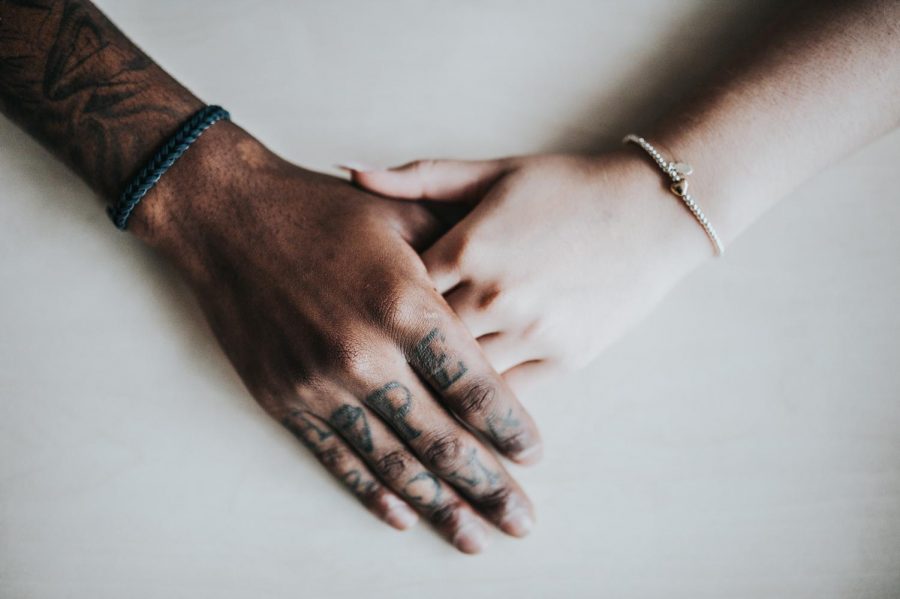Grappling with interracial dating in the modern age
If Christian Leano, a Skyline College student, were to be in the same relationship with his girlfriend that he is in now 50 years ago, chances are he would be breaking the law.
Although there are no laws today excluding Leano from being in a relationship with someone outside of his race, it seems as if social norms are still restricting his freedom to love someone who is different from himself.
Christian Leano, a student in the Respiratory Program who identifies as Filipino, opened up about the challenges he faces in his relationship with his significant other of Mexican background, Brianna Uribe.
Leano and Uribe are not alone in their interracial relationship. Now more than ever, people are dating others outside of their own race.
Over the past 50 years, the rate of newlyweds that married outside their race has increased, meaning that one-in-six newlyweds are married to someone of a different race or ethnicity, according to a a study by Pew Research. It also reports that interracial marriage has risen from 3 percent in 1967 to 17 percent in 2015, a more than five-fold increase.
Nearly 60 years ago, five weeks after their marriage, Richard and Mildred Loving were jailed for breaking the last of the anti-miscegenation laws. The Lovings brought their case to court, which resulted in the landmark supreme court case: Loving v. Virginia. It took nine years, but in 1967 a unanimous decision banned all laws that deemed interracial marriages unconstitutional.
Despite the changes in law, interracial relationships are still being stigmatized.
Ryan Lescure, a Skyline instructor who teaches Intercultural Communications shared some insight on where the societal perspective lies now.
“Larger society tends to communicate its disapproval more subtly now than it did in the past,” said Lescure. “These disapproving reactions tend not to be so obvious or straightforward, but they…subtly tell people in interracial relationships that their relationship is outside of the norm.”
Comments will always be made by outsiders, and it is one of the stumbling blocks in interracial relationships. For Leano and Uribe, the judgments and challenges affect more personal aspects of their relationships. It is not rare for families to add more complexities to relationships when a person dates someone outside of their culture.
“I think it gets stigmatized by family to a certain degree,” shares Leano. “ I know family is supposed to be there for support with the best interest with the couple. But they also are stuck in their traditional ways on how they were raised up, to make it how they would want things for the couple.”
Couples are sometimes belittled because of their race. Though despite the stigma, interracial couples continue to thrive, grow and learn from each other.
Cherakah Cunningham, an instructor in the Communication department who also teaches Intercultural Communication, demonstrated her passion on the topic.
“Ethnicity/race is just one of the many variables that make relationships interesting to observe and study for me,” said Cunningham. “In the past, I have done much research on this very topic because it was (and still is) deeply personal to me. But it is not all that a relationship is, not a defining factor.”
While people in the Bay Area tend to be more accepting of mixed-relations, this is not the case all over the United States.
“There are still places where the philosophies against interracial partnerships are so deeply rooted in history,” said Cunningham. “It makes it difficult for perceptions to shift to acceptance and understanding and we will still see resistance there.”
Pedro Rios, a Hispanic Skyline College student, is dating someone within his own race. Rios is aware that this kind of dating was once outlawed, and shared his perspective of facing fewer challenges when dating within one’s own race.
“By default dating within a race, means there are many similarities,” said Rios. “ Such as the same language, fashion, mutual cultures and values…it’s easy to transition to somebody you can relate to physically. But that doesn’t mean breaking racial barriers is a bad thing.”
Like Rios, many in the Bay Area do not see a problem with interracial dating and when talking about people dating outside of their race, especially with younger audiences, there is typically no problem. However, many are stuck in traditional mindsets, setting a definition for what the norm is.
“The vast majority of my students have a difficult time understanding how and why people have a problem with interracial romantic relationships,” shared Lescure.” I think this outlook is hopeful. I also think that we need to continue questioning why we think of certain things as normal if we want to reduce and ultimately eliminate the stigma associated with interracial relationships in United States culture.”
For couples like Leano and Uribe, being stigmatized is still a reality. The only thing left to do is to educate others and hope that the mindset of Rios and many other students have reached others.







